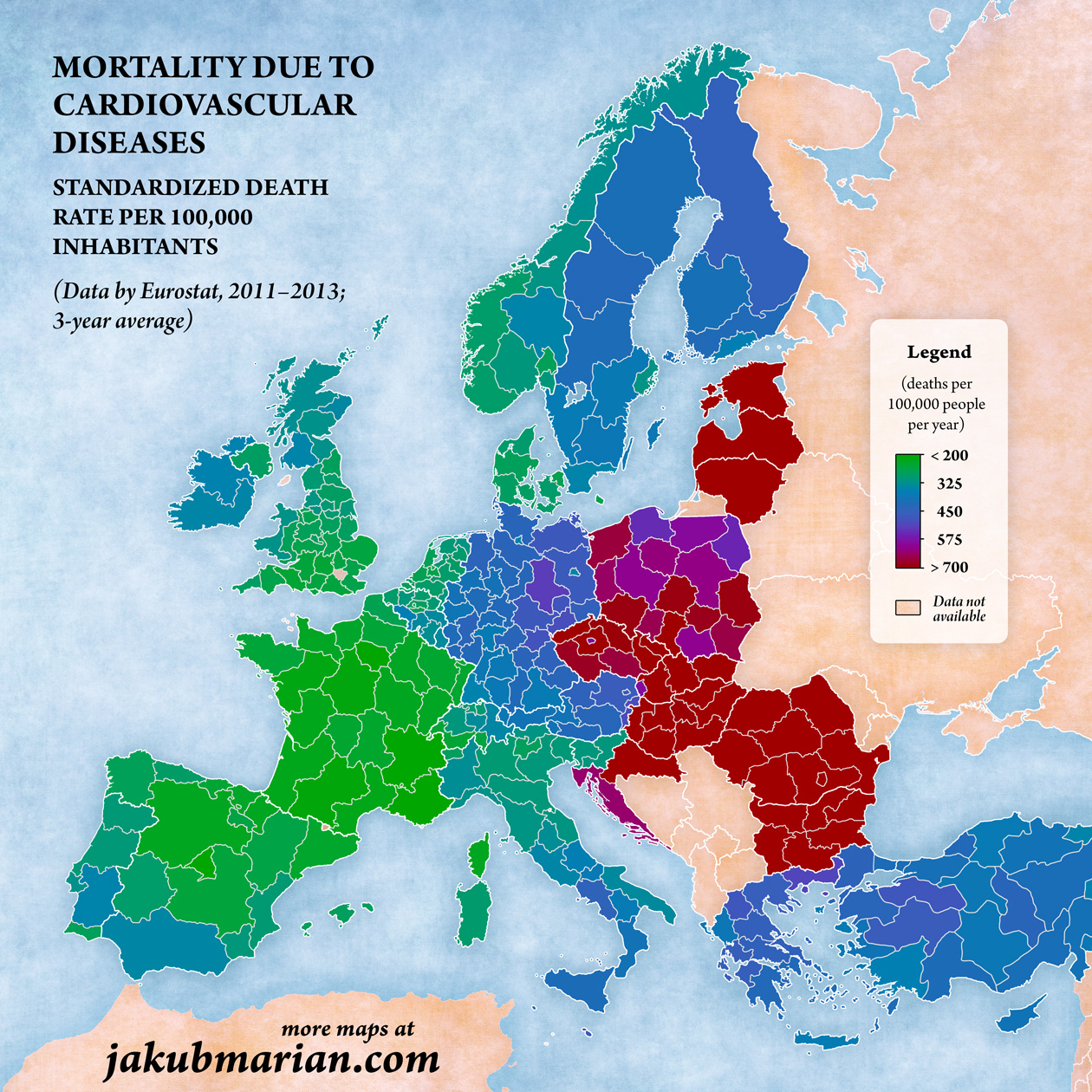Cardiovascular disease is a class of diseases that involve the heart or blood vessels, such as ischemic heart disease, hypertension, stroke, congestive heart failure, and many others. Cardiovascular disease is the most common cause of death in a majority of developed countries, but since most types of cardiovascular disease are directly influenced by lifestyle and nutrition, its incidence varies significantly among countries and regions.
The following map shows the standardized death rate due to cardiovascular diseases in European statistical regions (NUTS 2) and is based on data by Eurostat. The value of standardized death rate differs from the crude death rate in that the numbers are normalized with respect to the average population pyramid of the EU, which makes comparisons between regions easier. Thus, red colour does not necessarily indicate that more people die due to cardiovascular disease than in the green regions but rather that they tend to die younger.

The colouring scheme used in the map does not allow us to see the magnitude of differences in Eastern Europe, which is why it is shown separately (together with Baltic countries) in the following map. The data are the same as in the map above, but the values (and the corresponding colouring) range from 540 deaths per 100,000 people, which is the lowest value in Poland, to 1250, which is the highest value in Bulgaria.

The differences are highly worrying. Around twice as many Bulgarians and Romanians die of cardiovascular disease than Czechs and Poles, who are, in turn, three times as likely to die of a cardiovascular disease than the French. Differences in rates of cardiovascular disease are the major reason why the French live 4 years longer, on average, than the Poles, who live 4 years longer than the Bulgarians.
 Tip: Are you a non-native English speaker? I have just finished creating a
Tip: Are you a non-native English speaker? I have just finished creating a  Web App
Web App
